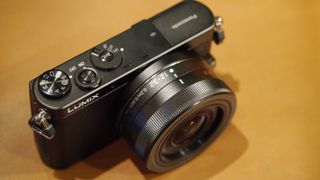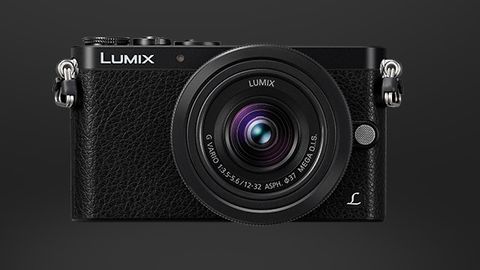Why you can trust TechRadar
We had pretty high hopes for the GM1, since it shares the same sensor as the GX7, which we know to be an excellent performer. It's interesting to see Panasonic really working to fill a niche gap in the market here as well, tackling the likes of the Sony RX100 II.
Happily, we have not been disappointed by what the GM1 is capable of producing. Images are full of detail, while colours are beautifully saturated without going over the top in the majority of conditions. Skin tones are also represented excellently.

The GM1's multi-zone (multi-purpose) metering system does a great job to produce balanced images in the majority of conditions, although in scenes with high contrast or extreme lighting conditions, you may find you need to dial up or down the exposure compensation for better accuracy.
Similarly, the GM1's automatic white balance system does well to produce scenes with accurate colours. Under artificial lighting conditions, the tendency is for the camera to err towards warm tones, especially of course if you're shooting under yellow/orange toned lighting. You can choose a more specific white balance setting if it's proving to be particularly problematic though, or create your own custom setting if it's really struggling.
Shooting at high sensitivities reveals the GM1 is very capable in lower lighting conditions. Image smoothing is virtually non-existent at the lower end of the sensitivity scale, only starting to become noticeable from around ISO 800 or ISO 1600, depending on the lighting conditions. Images shot at ISO 3200 remain useable, with noise and smoothing only really visible when examining an image very closely at 100%. Generally, noise is kept to a minimum, while detail is retained well.
AF speed is one of the key selling points of both Panasonic and Olympus Micro Four Thirds cameras. Once again, the GM1 delivers in that respect, with near-instant autofocusing. The speed drops slightly in low light, but not too badly, and generally focusing is very accurate, with very few examples of missed focus. Shot to shot time is also very good. Start up time is quick but, if you're using the kit lens, you will need to extend that before you can use it, so bear that in mind.
Speaking of the kit lens, the new 12-35mm optic is a good carry-around lens for everyday usage. It produces sharp images. By shooting at mid-range apertures, such as f/8, we can see that edge to edge sharpness is maintained pretty much right the way across the frame, which is good news. It's also possible to create shallow depth of field effects, despite the maximum aperture of the lens being f/3.5. Out of focus areas are rendered beautifully, with great bokeh effects.

Introducing a new compact kit lens is a smart move, as this keeps the overall system size down. We're excited to also use the new 15mm f/1.7 lens which is currently in development, as the maximum aperture of the new kit lens if f/3.5. You can of course attach other lenses from the Micro Four Thirds arsenal for even greater flexibility if you need it, but this is the kind of camera that Panasonic expects to be used with the kit lens for the majority of the time.
The GM1, like the other Lumix G cameras, comes with an impressive range of digital filters. It's still true that you can't retain full manual control while shooting with these filters, which is a shame, but we do think that the filters offered are the best on the market. We're particularly fond of Cross Process, Toy Camera and the several monochrome options, but of course that will be down to personal preference.
We continue to be impressed by the touchscreens on Lumix G cameras, and of course the GM1 is no different. Again, it's a smart move to include a touchscreen on such a device, since a good proportion of the target users will be coming from a smartphone background. The GM1's screen is very responsive and easy to use, making it great for setting autofocus points and even firing off the shutter release.
Current page: Performance
Prev Page Build quality and handling Next Page Image quality and resolutionAmy has been writing about cameras, photography and associated tech since 2009. Amy was once part of the photography testing team for Future Publishing working across TechRadar, Digital Camera, PhotoPlus, N Photo and Photography Week. For her photography, she has won awards and has been exhibited. She often partakes in unusual projects - including one intense year where she used a different camera every single day. Amy is currently the Features Editor at Amateur Photographer magazine, and in her increasingly little spare time works across a number of high-profile publications including Wired, Stuff, Digital Camera World, Expert Reviews, and just a little off-tangent, PetsRadar.


